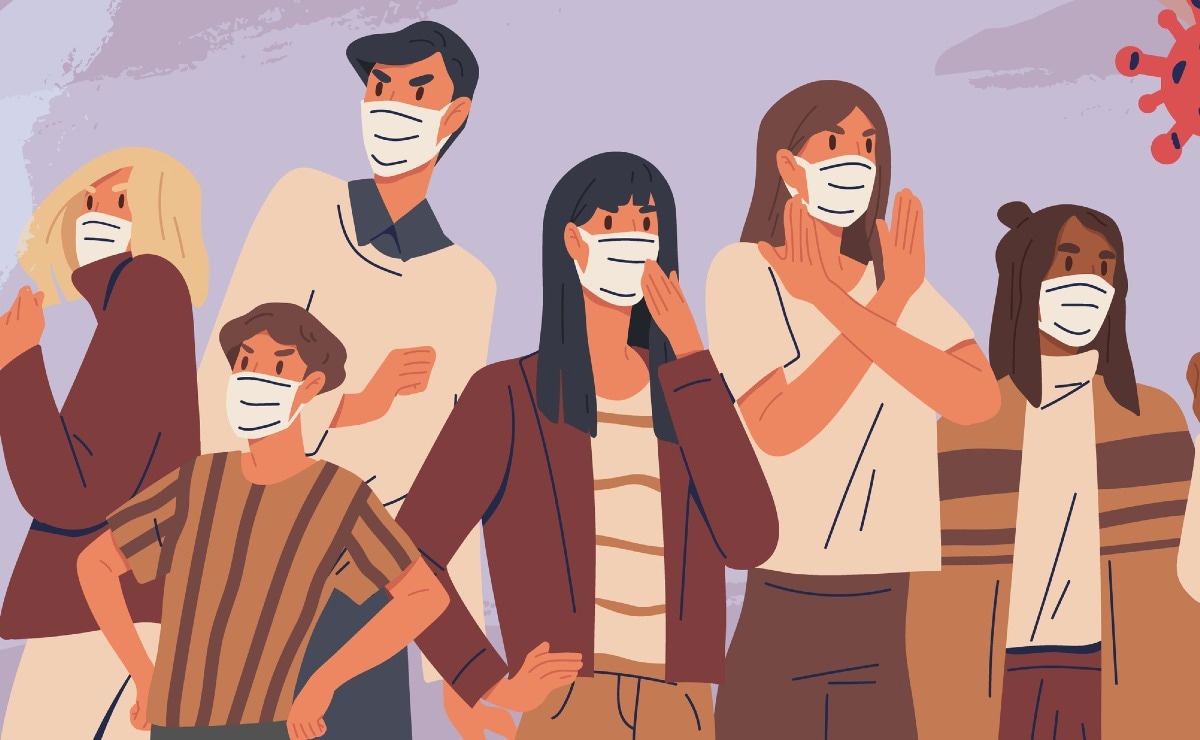A recent study published in the American Journal of Infection Control evaluated the associations between masking behavior and coronavirus disease 2019 (COVID-19).
 Study: Association between Self-reported Masking Behavior and SARS-CoV-2 Infection Wanes from Pre-Delta to Omicron-Predominant Periods — North Carolina COVID-19 Community Research Partnership (NC-CCRP). Image Credit: GoodStudio/Shutterstock
Study: Association between Self-reported Masking Behavior and SARS-CoV-2 Infection Wanes from Pre-Delta to Omicron-Predominant Periods — North Carolina COVID-19 Community Research Partnership (NC-CCRP). Image Credit: GoodStudio/Shutterstock
Face masks have been a critical public health measure to reduce the transmission of severe acute respiratory syndrome coronavirus 2 (SARS-CoV-2) throughout the COVID-19 pandemic. Non-pharmaceutical interventions (NPIs) remain crucial regardless of vaccination coverage, as vaccine- or infection-induced immunity wanes with time.
Evidence indicates that masks reduce the inhalation (by the wearer) and the emission (from infected individuals) of droplets. Most studies have focused on the impact of masking on community spread and are limited to specific conditions or settings. There is limited data on the benefits of masking at an individual level, particularly in the post-vaccination setting.
About the study
In the present study, researchers assessed the associations between self-reported masking behavior and the risk of SARS-CoV-2 infection. They used data from a prospective COVID-19 surveillance study, the North Carolina (NC) COVID-19 Community Research Partnership (CCRP). Participants were enrolled at six sites and recruited through public websites, patient portals, and community outreach.
Adults (18 years or older) were eligible if they (self-) reported COVID-19-naïve status at enrolment, completed daily online surveys, and did not enroll in vaccine trials. Demographic information such as race/ethnicity, sex, age, healthcare worker (HCW) status, and county of residence were self-reported at enrolment.
Daily online surveys were administered to collect information on COVID-19-associated symptoms, vaccination, test results, and risk behavior (mask usage and contact with infected individuals). Masking behavior was inferred from a response ‘yes’ or ‘no’ to a question on mask usage when interacting with non-household contacts in the past ten days.
Similarly, recent exposure to SARS-CoV-2 was categorized as ‘yes’ or ’no’ based on contact with an infected individual in the preceding ten days. A nested case-control analysis compared self-reported COVID-19 cases to controls who did not report a positive COVID-19 test. Each case was matched to up to 10 controls using an optimal algorithm that assigned a maximum number of controls to cases.
Conditional logistic regression was performed after adjusting for age, race/ethnicity enrolment site, county population density, vaccination status, HCW occupation, and recent exposure to SARS-CoV-2. The analyses were conducted for three COVID-19 temporal scales – pre-Delta (July 2020 – June 2021), Delta (July – November 2021), and Omicron (December 2021 – February 2022).
Findings
There were 27,813 controls matched to 3901 cases; the study population was predominantly non-Hispanic White and female. HCWs constituted 26.8% of controls and 35.4% of cases. Most cases (42.5%) were from the pre-Delta period, followed by Omicron (40.5%) and Delta (17.1%) periods. Not wearing masks while interacting with others was prominent among cases before the index date, i.e., the date when participants self-reported a positive test.
More than 42% of cases and 36.3% of controls reported not wearing masks at least once in the ten days before the match date. Most cases (54.1%) reported contact with a COVID-19-positive individual in the past ten days before the index date, compared to 9.3% of controls. Masking behavior differed across the three COVID-19 periods. Reports of not using masks among all participants were the lowest in the pre-Delta period.
Conversely, the Delta period had the highest number of reports of not using masks among cases and controls. The association of mask usage with COVID-19 varied across periods. In the pre-Delta period, participants, who reported not wearing masks for at least one day in the ten days before the index date, had 66% higher odds of COVID-19 than individuals who reported consistent mask usage.
The Delta period had a similar association between masking behavior and COVID-19. This relationship was attenuated during the Omicron period, albeit it remained significant. In the Omicron period, participants with inconsistent masking behavior in the ten days before the index date had 16% higher odds of COVID-19 than those who consistently reported using face masks.
Conclusions
In summary, the study found that not using face masks was associated with elevated odds of COVID-19. The impact of not using masks on disease transmission was significant throughout the study period, although the association was attenuated during the Omicron period. The theory that masking in the pre-Delta and Delta periods is associated with reduced odds of SARS-CoV-2 infection is concordant with findings in the literature.